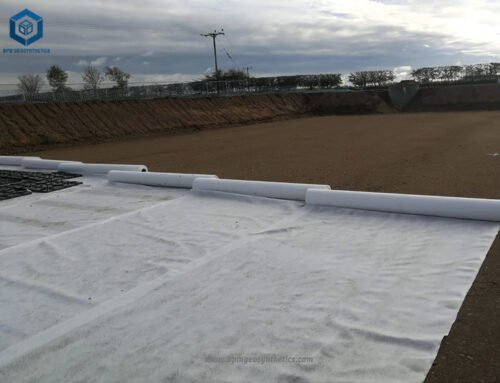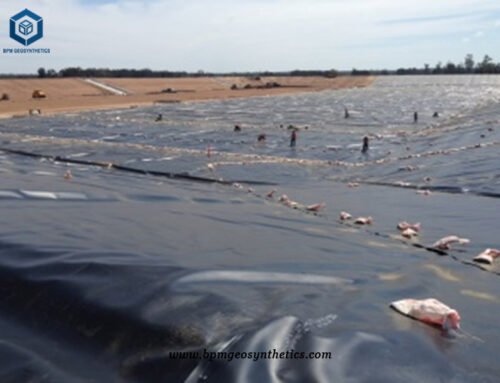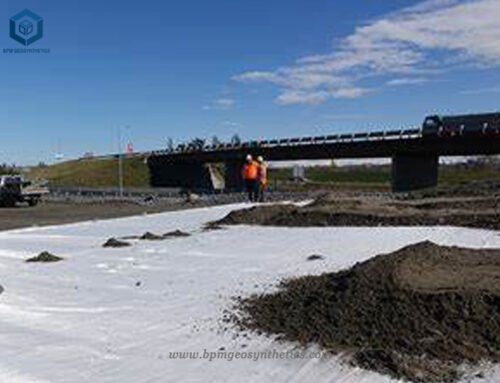HDPE membran liner, also known as HDPE geomembrane liner, is a waterproof barrier material based on high molecular polymer. Geomembrane liner mainly can be divided int low-density polyethylene (LDPE) geomembrane, high-density polyethylene (HDPE) geomembrane liner and EVA geomembrane. BPM is the lading HDPE geoemembrane manufacturer and supplier, we wholeslae geomembrane liner with compelete size and thickness at compelete factory price.
1. What Is HDPE Membran Liner?
HDPE Membran, also known as HDPE geomembrane, is a type of high-density polyethylene (HDPE) liner used in various applications, particularly for lining projects. It is widely recognized as one of the most commonly used geomembrane liners worldwide.
HDPE Membran exhibits excellent resistance to a wide range of solvents, making it suitable for diverse environments. It offers superior specific strength, meaning it provides high strength relative to its thickness. Additionally, HDPE Membran can withstand higher temperatures compared to other geomembrane materials.
One of the key advantages of HDPE Membran is its exceptional chemical resistance. It can resist the effects of various chemicals and substances, making it highly suitable for containment applications in industries such as mining, agriculture, waste management, and water treatment.
Moreover, HDPE Membran possesses excellent ultraviolet (UV) resistance, allowing it to withstand prolonged exposure to sunlight without significant degradation. This UV resistance contributes to the longevity and durability of the liner, making it a cost-effective solution for long-term projects.
While HDPE Membran is less flexible than linear low-density polyethylene (LLDPE), it offers superior strength and robustness. These properties make it an ideal choice for applications where strength and chemical resistance are paramount.
HDPE Membran is a widely used HDPE geomembrane liner known for its resistance to solvents, higher specific strength, ability to withstand higher temperatures, and exceptional chemical and UV resistance. Its versatility and cost-effectiveness make it a preferred choice for lining projects in various industries.
HDPE membran liner is a geotechnical anti-seepage material composed of plastic film as the anti-seepage base material and non-woven fabric. It is a kind of waterproof building material that prevents seepage and moisture. seepage performance.
HDPE membran liner is blow molded by adding a certain proportion of carbon black masterbatch, anti-aging agent, antioxidant, ultraviolet absorber, stabilizer, etc. to polyethylene resin. It is used to build warehouses, dams, cofferdams, canals, and artificial lakes, reservoirs and other water conservancy projects.
2. Case Study of HDPE Membran Liner Australia for Tailings Treatment Project
- Location – Australia
- Product(s) – HDPE membrane liner
- Application – Tailings treatment project
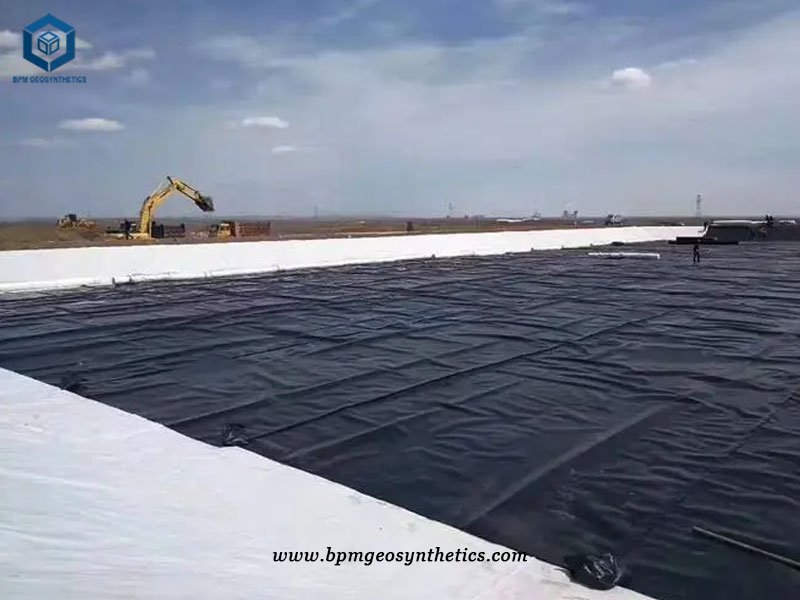
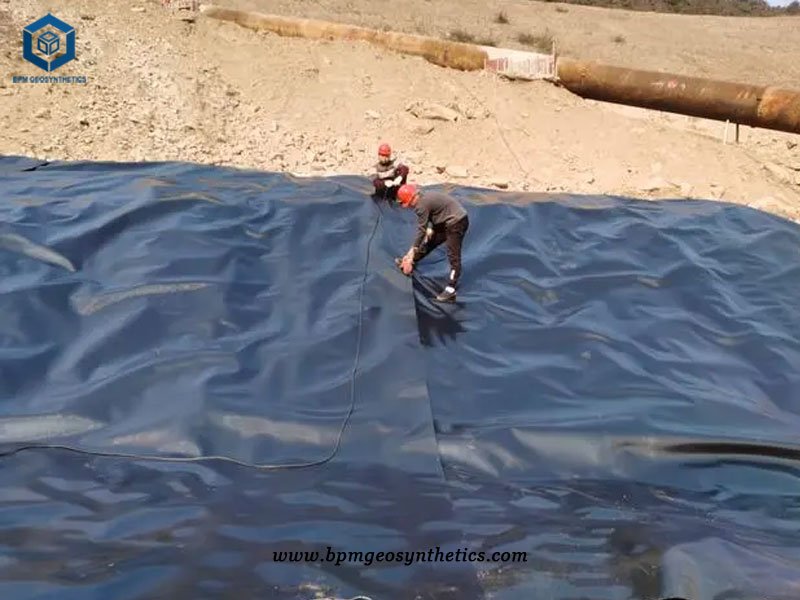
3. What Are Advantages of HDPE Membran for Tailings Treatment Project
When considering a tailings treatment project in Australia, choosing BPM HDPE Membran Liner offers several advantages.
3.1 Chemical Resistance
BPM HDPE Membran Liner is highly resistant to chemical degradation, including the harmful sulfide compounds found in tailings. This resistance ensures the liner’s integrity and prevents the release of metals and other harmful substances into the environment.
3.2 Impermeability
HDPE Membran Liner has excellent impermeability properties, effectively preventing the migration of contaminants from the tailings into the surrounding soil and groundwater. This helps to protect the local ecosystem and water resources.
3.3 Durability
BPM HDPE Membran Liner is known for its high durability and long service life. It can withstand harsh environmental conditions, including UV exposure, temperature variations, and physical stress, ensuring the integrity of the liner over time.
3.4 Easy Installation
The installation process of HDPE Membran Liner is relatively straightforward and efficient. This allows for faster project completion and reduces labor and installation costs.
3.5 Cost-Effectiveness
BPM HDPE Membran Liner offers a cost-effective solution for tailings treatment projects. Its durability and low maintenance requirements contribute to long-term cost savings.
BPM HDPE Membran Liner for the tailings treatment project can ensure the containment and safe management of tailings materials.
4. Solution of HDPE Membran for Tailings Treatment Project in Australia
In the anti-seepage system of tailings dams or tailings ponds, the use of geomembranes can effectively protect the environment and prevent soil and groundwater pollution. We provide geotechnical materials according to the needs of customers’ projects, and provide installation guidance.
4.1 Site Foundation Treatment
- Before laying HDPE membran liner, the laying base should be fully inspected. The laying base should be solid and flat. There should be no tree roots, rubble, stones, concrete particles, steel bars, glass chips, etc. within a vertical depth of 25m, which may damage the geotechnical work. Membrane debris. Compact with a wheel compactor to remove car prints, footprints and ground bumps. In addition, the raised ground should also be smashed or compacted.
- When the HDPE membran liner is laid on the backfill, the compaction of the backfill should not be less than 95%.
- The foundation of the site should be free of water seepage, silt, ponding, organic residues and harmful substances that may cause environmental pollution. The corners of the foundation should be smooth. Generally, the radius of the arc should not be less than 500 mm.
4.2 The environmental conditions for the laying of the bottom HDPE membran liner
- The temperature should generally be above 5°C. It is especially important to pay attention to the construction under low temperature conditions, the geomembrane should be tensioned, and the geomembrane should be relaxed under high temperature conditions; 200mm can be left at the junction of the pool bottom and the inner slope High wrinkle membrane.
- The wind force during construction should be below grade 4, and strong winds will seriously affect the progress and quality of construction. The wind affects the construction of the geomembrane. After laying the base film, it is necessary to use sand bags to press the HDPE geomembrane to be welded firmly.
- There are no hard objects protruding from the surface of the laying area. If necessary, the hard objects on the surface should be cleaned manually, and the surface should be covered with plain soil. According to the actual conditions of the site, the method of “push paving” from the top of the pool along the slope of the dam body is generally adopted when laying. Effectively reduce work difficulty and improve efficiency.
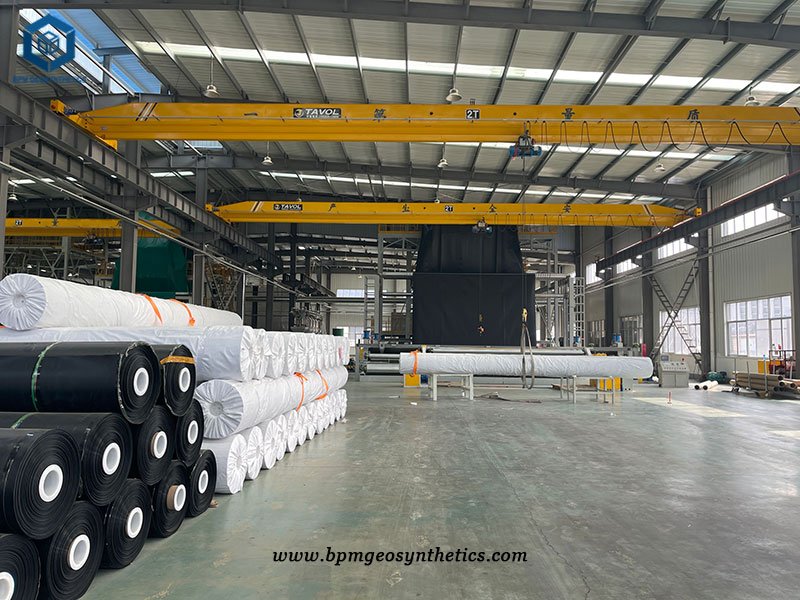
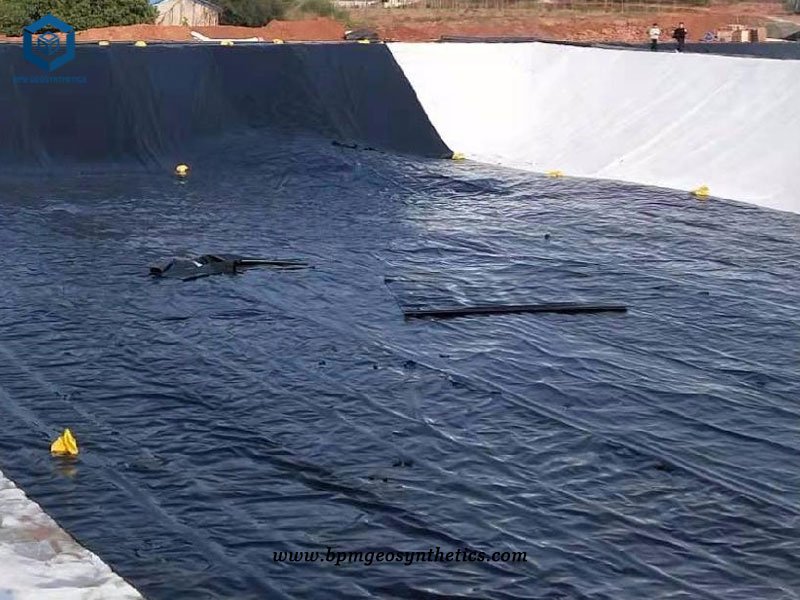
5. HDPE Membrane Installation Process
5.1 HDPE Geomembrane Welding Machine
HDPE geomembrane welding machine mainly includes double-track welding machine and extrusion welding machine. The double-track welding machine is mainly used for long-distance joining of two films (the distance is greater than 50cm), and the overlapping width of the two films is 12cm (±2cm). The working temperature of the welding machine is between 370°-420°, and the thickness of the film is different, so the temperature and speed required for welding are also different.
Single-track extrusion welding is mainly used to repair areas or holes that cannot be welded by double-track welding machines. The overlapping width of the two films is 5cm, and the error range is (±2cm). Repair process: cutting, hot air bonding positioning, roughening, monorail extrusion welding, strength inspection.
Due to the difference in temperature and pressure, the repair quality of extrusion welding machine is worse than that of double track welding machine, so it is not recommended to use it in a large scale.
5.2 HDPE Geomembrane Installation Process
- Before laying, check and measure according to the laying area, and cut according to the size; to avoid wasting materials, try to minimize welds when laying HDPE impermeable membrane.
- The longitudinal joint of the dam slope should be more than 1.50m away from the slope foot and the bend foot, and should be set on the bottom plane of the pool.
- When laying PE geomembrane, the nodes formed between the membrane blocks should be T-shaped, and cross-shaped nodes should not be made; and the positions of adjacent T-shaped nodes should be more than 1m away from each other.
- When the joints are affected by condensation, moisture, sediment, etc., weld them after treatment.
- The welding seam is required to be neat and beautiful, and there must be no slip welding or jumping away.
- When the length of the anti-seepage membrane is not enough, long-term splicing is required. The horizontal welds should be welded first and then the longitudinal seams. The distance between the transverse welds should be more than 50cm and should be T-shaped, and no crosses should be allowed. Horizontal welding is not allowed on the pool wall .
- The welding seam should be as straight as possible. In corners and deformed areas, the length of the welding seam should be shortened as much as possible or the occurrence of welding seam should be avoided.
- The overlapping width of the two films is determined according to the distance between the two tracks of the double-track welding machine, preferably 12cm; the laying of the HDPE anti-seepage film is required to be flat and straight, to avoid wrinkles and ripples, so that the two films are aligned and overlapped. together.
About BPM Geomembrane
BPM has been specializing in delivering one stop geosynthetics products and solutions to worldwide customers since its foundation in 2007. BPM had provided many types of effective and state of the art geomembranes, geotextiles, geocells, geosynthetic clay liners (GCLs), drainage boards, geogrids to over 81 countries.
BPM is not only manufacturing best quality geosynthetic products but also providing professional design and installation service. OEM, ODM, custom development and fabrication are also available. If you have any questions or inquiries, please contact us, we will reply as soon as possible.


